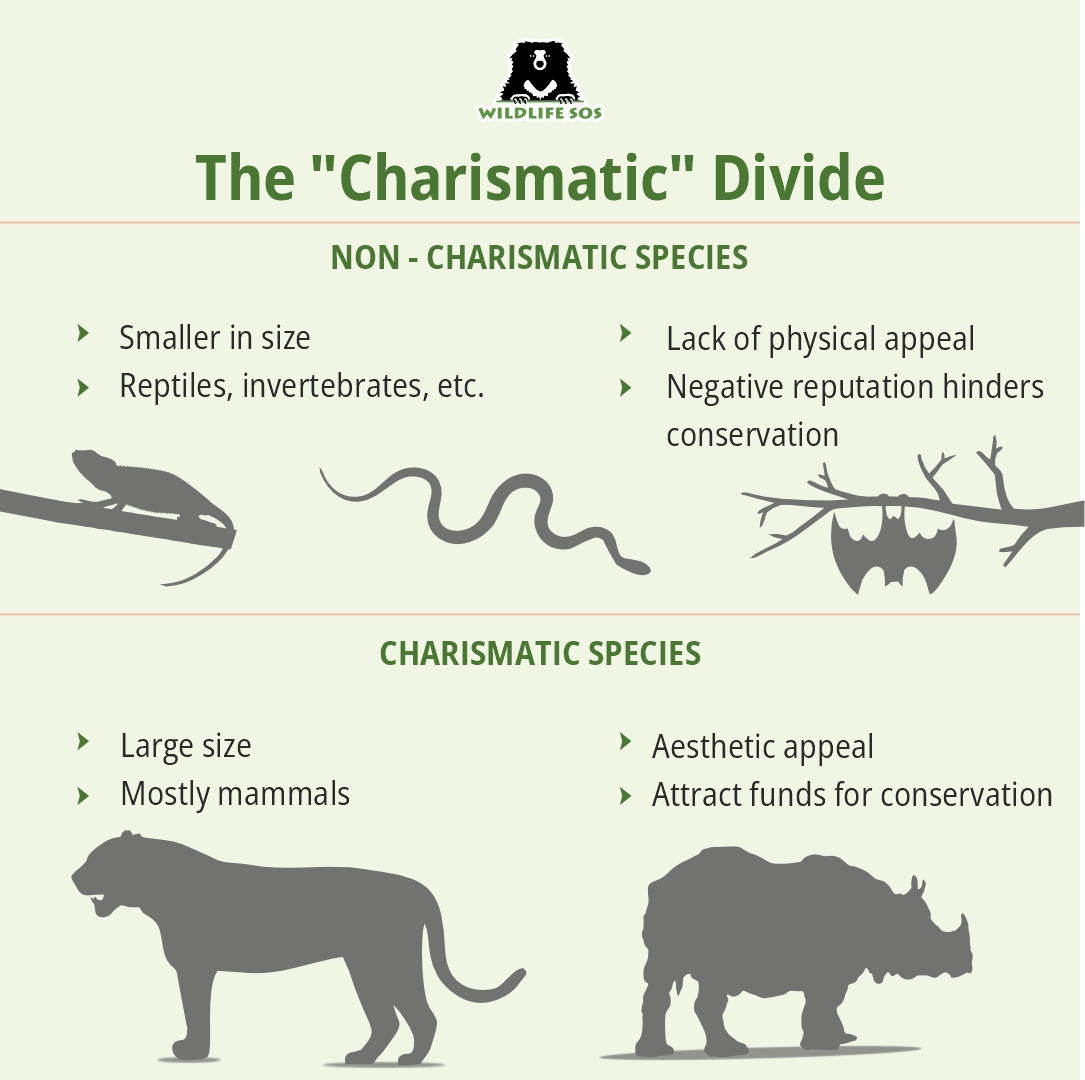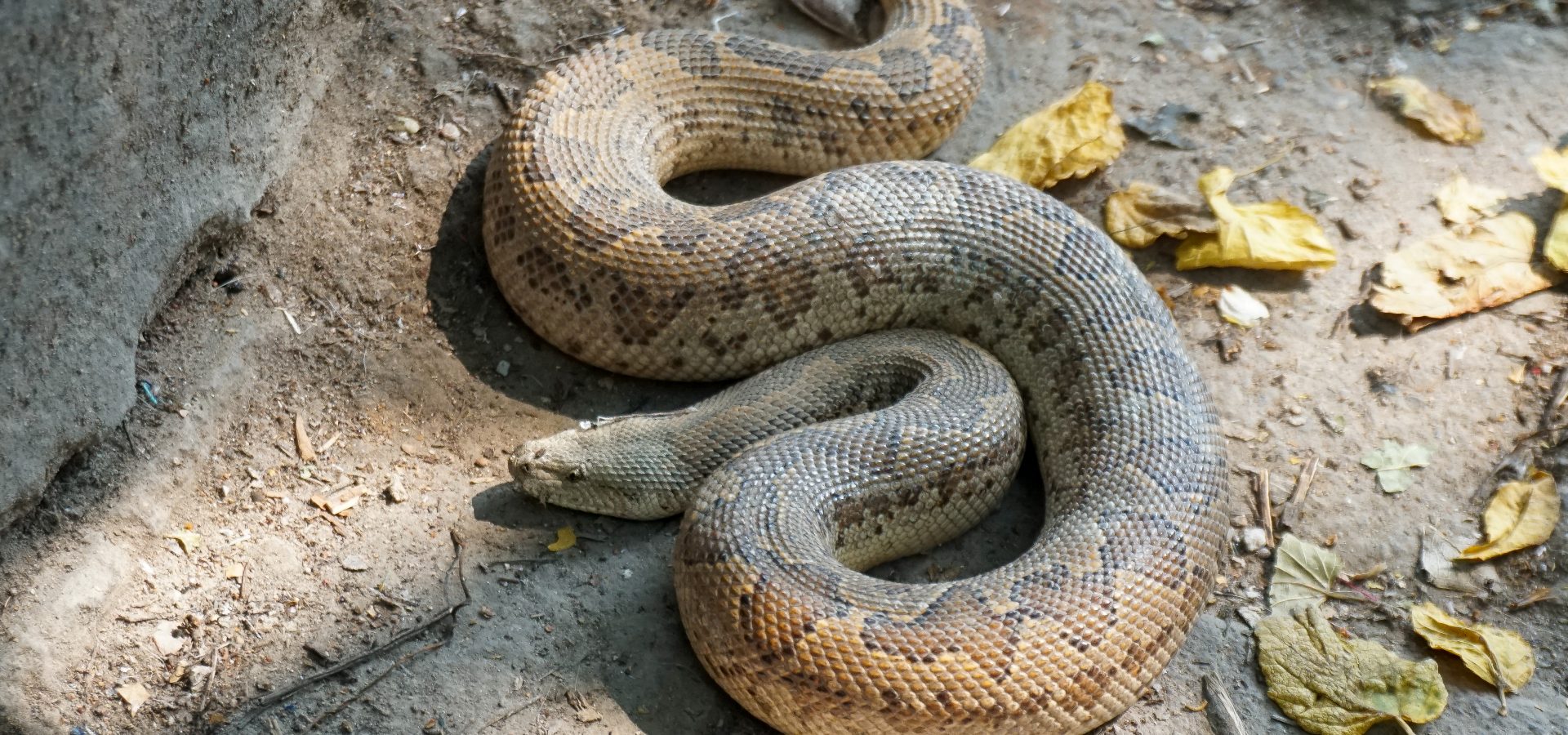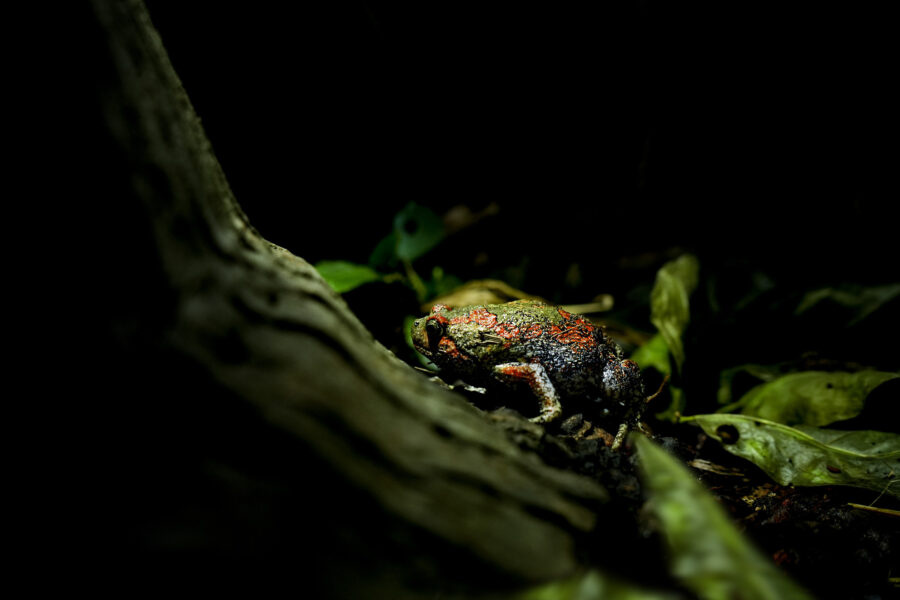“All animals are equal, but some animals are more equal than others.”
George Orwell’s famous quote from Animal Farm aptly sums up the general attitude towards wildlife conservation.
According to the International Union for the Conservation of Nature (IUCN), the lion’s share (pun intended!) of attention and media coverage goes to big cats, large herbivores and other mammals where conservation is concerned. Meanwhile, smaller, non-mammalian fauna slip under the public radar despite having a higher number of threatened species.
Megafauna (“mega”: big) refers to large animals. The term “charismatic megafauna” was coined to look at the potential of these large animals (many of which are endangered) to become symbols of conservation for their species and ecosystems. While the popular appeal of these animals has garnered both funds and media attention towards their cause, the same often causes many other animals (often smaller, considered to be less appealing) to be ignored.

Over the years, Wildlife SOS’s tireless efforts have ensured that a fair balance exists in conserving animal species, whether they are charismatic mammals like leopards, elephants and bears or the underappreciated reptiles, civets and hyenas.
The Physical Charisma
We have all seen pictures of the Bengal tiger and the Indian one-horned rhinoceros adorning the covers of nature magazines. But do you know of the elusive levantine viper of Jammu and Kashmir? Several factors decide how certain species become conservationists’ favourite children, the foremost of them being interpretative anthropomorphism.
Anthropomorphism is defined as the tendency to attach human attributes to non-human (animal, plant or inanimate) matter. Often, the process is intuitive, leading us to attribute certain animal characteristics being similar to humans.
Size of the animal and its physical features are factors that prompt sensitive reactions from human beings. Charismatic animals therefore fit well into descriptive categories like “cute” or “cuddly” because of large and forward-facing eyes, delicate and infantile features and fuzzy, round faces among others.
Such attributes are found to a great degree in large mammals like elephants, lions, tigers, bears, gorillas and rhinos. We tend to project a human emotional state – and consequently apply moral consideration – onto them. This way, charismatic megafauna tug at our heartstrings and become icons of conservation for their ecosystems. According to studies, charismatic species of animals draw in a higher number of donations towards their conservation.
The Need to Conserve All Species
While conservation efforts for charismatic megafauna have led to desirable public awareness, we still have a long way to go to ensure their freedom and safety in the wild. Just this year, Wildlife SOS seized a 10-foot-long tiger skin from poachers.
Despite the success of Project Tiger, their body parts are still high in demand across foreign markets for their aesthetic quality, leading illegal hunters to target this magnificent big cat. In a recent incident, Wildlife SOS assisted the Gujarat Forest Department in busting the operations of a poaching ring seeking to smuggle elephant ivory and rhinoceros horns.
The intelligence, empathetic ability and large sizes of elephants have long enabled them to become the apple of the public’s eye. However, public appeal can be a double-edged sword. The very appeal of these gigantic pachyderms has led to their cruel captivity and use in the tourism industry, and as begging and circus elephants. Wildlife SOS’s Elephant Conservation and Care Centre houses over 30 elephants of various ages who had been rescued from such lives of abuse and neglect.
Sloth bears in India had gained popularity as ‘dancing’ bears that were used to entertain royal families in earlier times, but later became popular street performers for the common man. A major reason for this stems from the fascination of watching wild bears perform up close. Wildlife SOS worked tirelessly with the government of India to resolve the ‘dancing’ bear practice in India.
The general enticement for these large animals can also be channelled in a more positive direction. To curb the decline of their population, their habitat needs to be protected. Sloth bears can become mascots of conserving their natural habitat.
Wildlife SOS launched an initiative towards habitat restoration with Ram Durga Valley in Karnataka. While initially serving to protect bears – who had become the principal icons of this conservation project – the ecological restoration of the area also ensured the comeback of other endangered species like pangolins.
However, less charismatic species receive almost no media attention, considering how they are negatively perceived by many! To ensure interspecies justice for our biodiverse world, we must pay attention to the species from the animal world that have so far been in the shadows of the limelight.
While the “cute” factor of mammalian features goes a long way, it does not guarantee attraction towards all. Despite being mammals, hyenas, civets and bats are mired in a web of myths and false narratives and are hence not regarded well among the public.
Last year, a striped hyena was chased by villagers before it found refuge in a culvert. While our team managed to rescue it in time, non-charismatic species across the country suffer due to a similarly poor reputation, complicating the nature of such rescues. As such, giving these animals a much-needed image makeover is an essential part of their conservation.
The situation is even worse for snakes and other reptiles, who face constant stigma despite being infinitely more scared of humans than we are of them. This was evident when locals used a sharp item to chase off a Himalayan trinket snake in the Zabarwan Forest Range of Jammu and Kashmir.
This caused the reptile to suffer a neck injury. While we did manage to rescue and release it into the wild after timely medical intervention, the incident highlights how awareness through communication is essential to prevent the undue persecution of these animals.
Widespread Awareness for Unbiased Conservation
To dispel unfounded fears, it is necessary to organise sessions that can help spread awareness among local communities that stand on the frontlines of conservation. Snakes are also reported to be found within places such as factories that are remotely located close to the wild.
While conducting rescues of reptiles, we ensure to sensitise the local populace regarding the species. In the month of April 2023 itself, we saved around 14 snakes from Delhi, including the Indian cobra, common krait, common wolf snake, black-headed royal snake and Indian rat snake.
Furthermore, in a recent incident, a three-foot-long monitor lizard crawled into the engine of a delivery truck at a CNG filling station in Runakta, Agra while seeking refuge from the heat.
The driver was well aware of how to deal with the situation and immediately contacted Wildlife SOS for assistance out of concern for the lizard’s safety. Our team rushed to the animal’s aid, carefully removing it from under the truck and putting it in a transportation carrier.
Media representation (and especially social media) can play a huge role in gathering appreciation for our misunderstood neighbours. The Wildlife SOS Reptiles group is dedicated to highlighting our reptilian rescues and busting myths regarding snakes. Many of these snakes are victims of habitat encroachment, poaching, climate change and conservation bias. Wildlife SOS has also been asked to conduct surveys in residential and commercial areas where snakes have earlier been found.
Widespread awareness by Wildlife SOS about our rescue operations has made a positive change. With the proper know-how, local people are now capable of taking correct actions, and inform us on time. Timely calls by concerned citizens have helped us rescue various kinds of venomous and non-venomous snakes that were caught in distress.
If you unexpectedly see a snake or any other animal, immediately contact your local animal welfare organisation, and if you are based in any of our operating cities, instantly reach out to our 24×7 rescue helplines:
Delhi NCR: +91-9871963535
Agra, Uttar Pradesh: +91-9917109666
Vadodara, Gujarat: +91-9825011117
Srinagar, Jammu and Kashmir: +91-7006692300/ +91-9419778280





